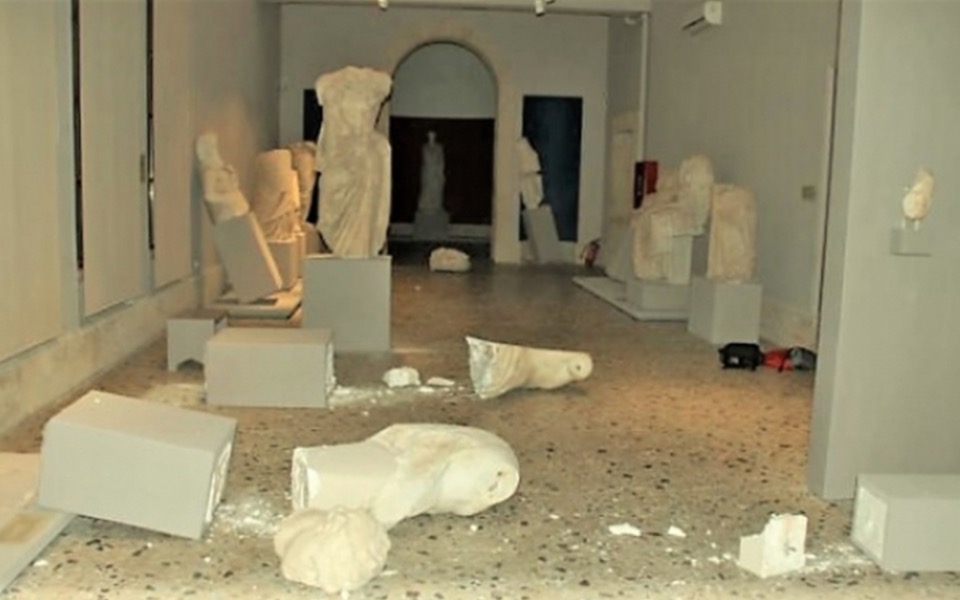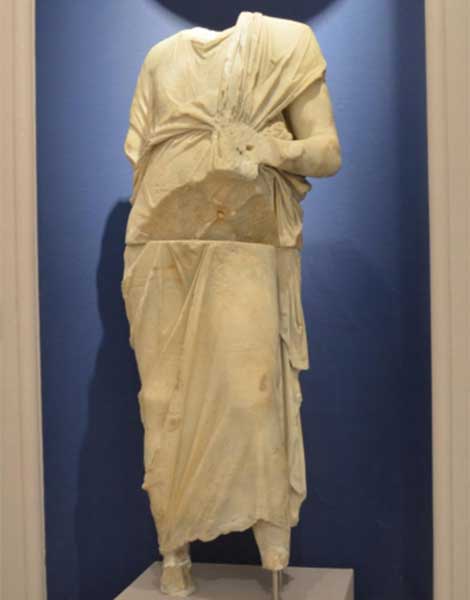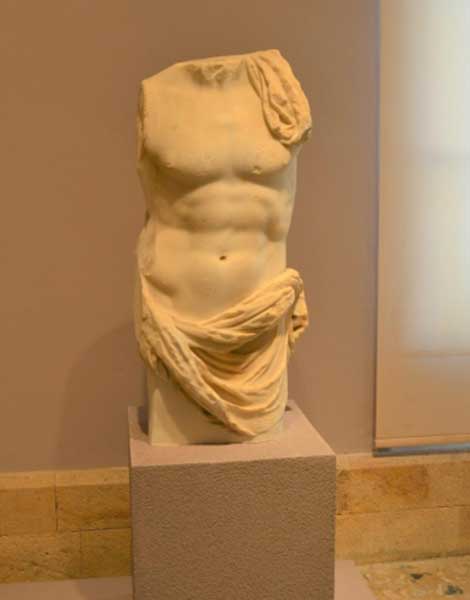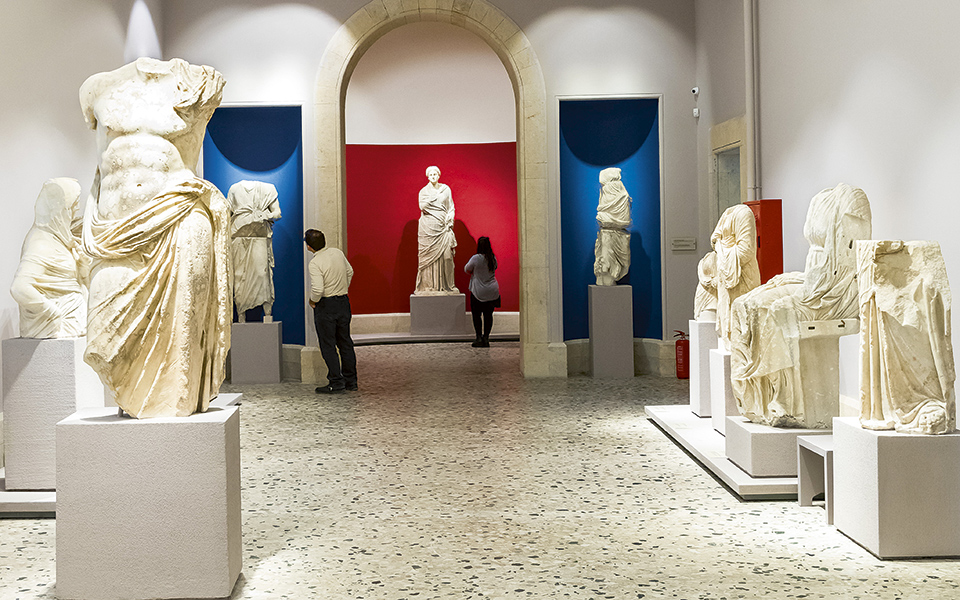Following a major restoration project, five ancient sculptures damaged in the 6.7 magnitude earthquake of July 21, 2017 have been returned to their exhibition gallery at the Archaeological Museum of Kos (AMK) in the Dodecanese.
The deadly earthquake, which killed two people on the island, caused widespread damage to a number of archaeological sites and monuments, including sections of the ancient agora, the medieval Nerantzia Castle and the island’s recently refurbished museum. Of the 43 ancient sculptures on display, five fell from their pedestals, sustaining serious damage.
The museum, founded in 1936 during the period of Italian rule (1912-1943), had undergone a major 4-year renovation program prior to the earthquake, reopening its doors to the public in September 2016. Thanks to the upgrade, including improved information boards and the addition of new exhibition spaces, the museum had become a major cultural attraction on the island, located in the historic heart of Kos town.

© Archaeological Museum of Kos / Ministry of Culture and Sports
In the immediate aftermath of the earthquake in 2017, less than 10 months after the museum’s reopening, the Greek Ministry of Culture responded by conducting a thorough damage assessment of the building and its ancient exhibits. It was discovered that a number of ceramic artifacts had been damaged, sustaining chips and cracks, and five sculptures had fallen off their pedestals on to the hard marble floor.
Most of the damage to the sculptures affected their plaster fillings, applied during previous conservation efforts for their aesthetic improvement. Technicians and conservators from the local Ephorate of Prehistoric and Classical Antiquities, under the leadership of curator and archaeologist Toula Marketou, embarked on a major restoration project, repairing the damaged exhibits in order to reopen the museum to the public as quickly as possible.

© Archaeological Museum of Kos / Ministry of Culture and Sports

© Archaeological Museum of Kos / Ministry of Culture and Sports
In a recent statement from the Ministry of Culture, the damaged sculptures, including three headless statues, have finally been restored and returned to display at the museum.
The countrywide closure of museums in Greece during the Covid-19 pandemic provided curators with an opportunity to take further steps to minimize future earthquake damage by repositioning exhibits – a process called “seismic shielding.”
In the lead up to the reopening of museums on May 14, the Minister of Culture, Lina Mendoni, gave instructions to speed up these procedures and complete outstanding restoration projects. The additional steps for seismic shielding will ensure that museums in Greece, one of the most seismically active regions on earth, will be even better prepared in the future.











